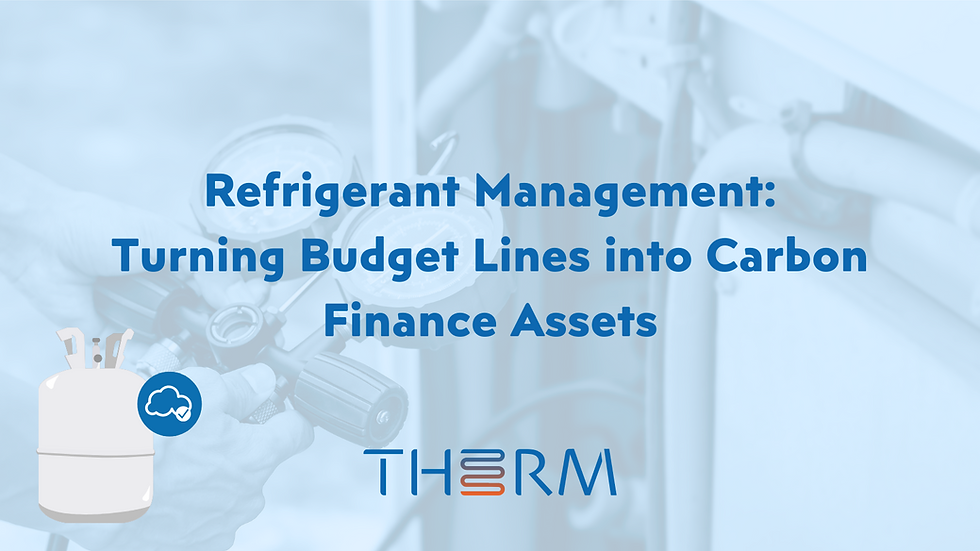The Role of Refrigerants in the Food Supply Chain
- Justin Laka
- Jul 22, 2024
- 2 min read
Refrigerants play a crucial role in the intricate web of the food supply chain, ensuring the safe transport, storage, and preservation of perishable goods from field to fork. Understanding their significance and the challenges they pose is essential for anyone involved in sustainable food systems and climate action.
The Role of Refrigerants in the Food Supply Chain
Refrigerants are essential substances used in various stages of the food supply chain, primarily in refrigeration systems, cold storage facilities, and transportation vehicles. Their primary function is to maintain low temperatures necessary for preserving food quality, safety, and shelf life. Here’s how they fit into different aspects of the supply chain:
1. Production and Processing
In agriculture and food processing facilities, refrigerants are used in cooling systems to preserve harvested crops, dairy products, meats, and other perishable items. This initial stage ensures that fresh produce and raw materials maintain their quality before they reach consumers.
2. Cold Storage and Warehousing
Once harvested or processed, food products often require prolonged storage in cold storage facilities or warehouses equipped with refrigeration systems. These facilities use refrigerants to maintain specific temperatures critical for extending the shelf life of products and preventing spoilage.
3. Transportation and Distribution
Refrigerated trucks, containers, and ships play a pivotal role in transporting perishable goods over long distances. Refrigerants in these transport systems ensure that food products remain fresh and safe during transit, especially important for international food trade and distribution networks.
4. Retail and Consumer Use
In grocery stores and supermarkets, refrigeration systems keep perishable foods like fruits, vegetables, dairy products, and meats chilled or frozen until they are purchased by consumers. This final stage in the supply chain relies heavily on refrigerants to maintain food safety standards and consumer satisfaction.
Challenges and Environmental Impact
While refrigerants are indispensable for preserving food quality and safety, they also pose significant environmental challenges:
Climate Impact: Many traditional refrigerants, such as hydrofluorocarbons (HFCs) and chlorofluorocarbons (CFCs), contribute to global warming and ozone depletion when released into the atmosphere.
Energy Consumption: Refrigeration systems account for a substantial portion of energy consumption in the food supply chain, contributing to overall carbon emissions.
Decarbonizing refrigeration
Efforts to mitigate the environmental impact of refrigerants in the food supply chain include:
Transition to Low-GWP Refrigerants: Adopting refrigerants with lower global warming potential (GWP), such as hydrocarbons (HCs) or natural refrigerants like ammonia or CO2.
Energy Efficiency Improvements: Implementing energy-efficient refrigeration technologies and practices to reduce overall energy consumption and greenhouse gas emissions.
Refrigerant Management: Proper handling, maintenance, and disposal of refrigerants to minimize leaks and emissions, along with reclaiming and recycling old refrigerants where possible.
Refrigerants: Indispensable in the Food Supply Chain
Refrigerants are indispensable in the modern food supply chain, enabling the safe transport, storage, and distribution of perishable goods worldwide. However, their environmental impact underscores the need for sustainable practices and technologies to mitigate climate change and ensure food security for future generations. By adopting low-GWP refrigerants, improving energy efficiency, and implementing rigorous refrigerant management practices, stakeholders can contribute to a more sustainable and resilient food supply chain.




